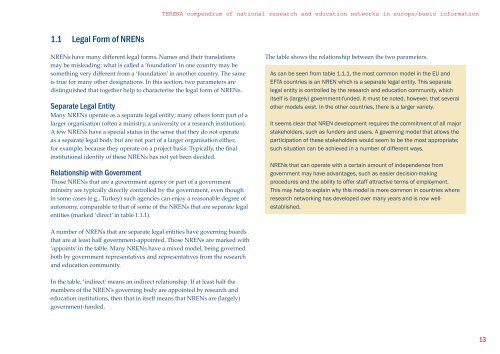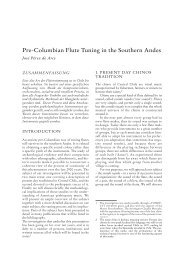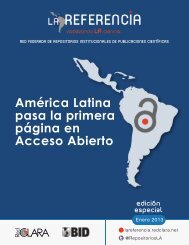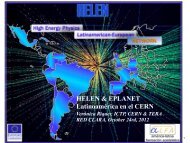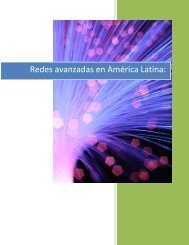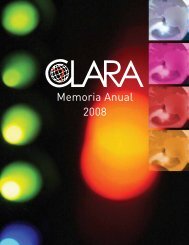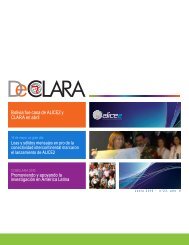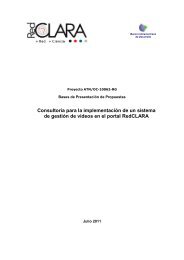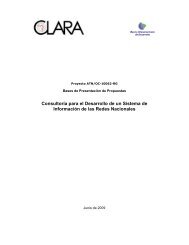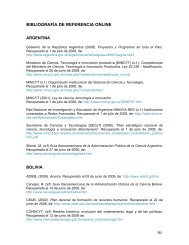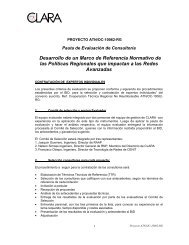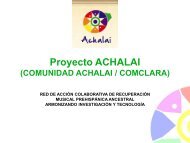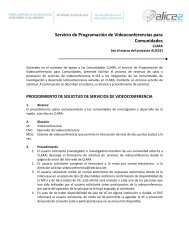full PDF version (2.1 MB) - Terena
full PDF version (2.1 MB) - Terena
full PDF version (2.1 MB) - Terena
- No tags were found...
Create successful ePaper yourself
Turn your PDF publications into a flip-book with our unique Google optimized e-Paper software.
TERENA compendium of national research and education networks in europe/basic information1.1 Legal Form of NRENsNRENs have many different legal forms. Names and their translationsmay be misleading: what is called a ‘foundation’ in one country may besomething very different from a ‘foundation’ in another country. The sameis true for many other designations. In this section, two parameters aredistinguished that together help to characterise the legal form of NRENs.Separate Legal EntityMany NRENs operate as a separate legal entity; many others form part of alarger organisation (oen a ministry, a university or a research institution).A few NRENs have a special status in the sense that they do not operateas a separate legal body but are not part of a larger organisation either,for example, because they operate on a project basis. Typically, the finalinstitutional identity of these NRENs has not yet been decided.Relationship with GovernmentThose NRENs that are a government agency or part of a governmentministry are typically directly controlled by the government, even thoughin some cases (e.g., Turkey) such agencies can enjoy a reasonable degree ofautonomy, comparable to that of some of the NRENs that are separate legalentities (marked ‘direct’ in table 1.1.1).The table shows the relationship between the two parameters.As can be seen from table 1.1.1, the most common model in the EU andEFTA countries is an NREN which is a separate legal entity. This separatelegal entity is controlled by the research and education community, whichitself is (largely) government-funded. It must be noted, however, that severalother models exist. In the other countries, there is a larger variety.It seems clear that NREN development requires the commitment of all majorstakeholders, such as funders and users. A governing model that allows theparticipation of these stakeholders would seem to be the most appropriate;such situation can be achieved in a number of different ways.NRENs that can operate with a certain amount of independence fromgovernment may have advantages, such as easier decision-makingprocedures and the ability to offer staff attractive terms of employment.This may help to explain why this model is more common in countries whereresearch networking has developed over many years and is now wellestablished.A number of NRENs that are separate legal entities have governing boardsthat are at least half government-appointed. Those NRENs are marked with‘appoints’ in the table. Many NRENs have a mixed model, being governedboth by government representatives and representatives from the researchand education community.In the table, ‘indirect’ means an indirect relationship. If at least half themembers of the NREN’s governing body are appointed by research andeducation institutions, then that in itself means that NRENs are (largely)government-funded.13


